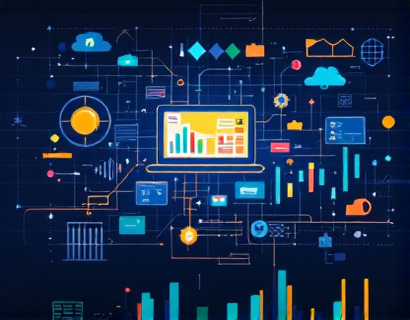Unlocking the Cosmos: Interactive Software for Astronomy Education and Exploration
In an era where technology and education converge, the field of astronomy has witnessed a revolutionary transformation. Interactive software has emerged as a powerful tool, making the vast and intricate universe accessible to a broader audience. This article delves into the capabilities and benefits of such software, designed to enhance astronomy education and exploration. Whether you are an astronomy enthusiast, an educator, or a student, these tools offer a unique and engaging way to explore the cosmos.
Immersive Learning Experiences
One of the most significant advantages of interactive astronomy software is the immersive learning experience it provides. Traditional methods of teaching astronomy often rely on textbooks and static images, which can limit understanding and engagement. Interactive software, however, brings the universe to life through 3D models, simulations, and virtual tours. Users can explore planets, stars, galaxies, and other celestial bodies in a way that feels almost tangible. This immersive approach not only makes learning more enjoyable but also helps in retaining complex information.
For instance, users can embark on a virtual journey through the solar system, observing the unique features of each planet. They can zoom in on Jupiter's Great Red Spot, explore the rings of Saturn, or examine the surface of Mars in high detail. Such experiences are not only educational but also spark curiosity and a deeper interest in astronomy.
Engaging Resources for All Levels
Interactive astronomy software caters to a diverse audience, from beginners to advanced learners. For those new to the subject, the software offers introductory modules that cover fundamental concepts such as the phases of the moon, the difference between asteroids and comets, and the basics of stellar evolution. These modules are designed to be accessible, using simple language and visual aids to explain complex ideas.
For more advanced users, the software provides in-depth resources and tools for research and exploration. Users can access detailed catalogs of celestial objects, interactive maps of the night sky, and data sets for scientific analysis. These resources are invaluable for students, educators, and hobbyists who wish to delve deeper into specific areas of astronomy.
Comprehensive Tools for Exploration
The software includes a wide range of tools that facilitate exploration and learning. One of the key features is the real-time sky simulation, which allows users to see the current positions of stars, planets, and other celestial bodies from any location on Earth. This tool is particularly useful for amateur astronomers who want to plan their observations or for educators who wish to demonstrate celestial events in real-time.
Another essential tool is the astronomical calculator, which helps users determine the positions of celestial objects at specific dates and times. This feature is invaluable for planning observations, understanding orbital mechanics, and conducting astronomical research. Additionally, the software often includes a database of historical astronomical events, enabling users to explore the past and understand how our understanding of the universe has evolved over time.
Interactive Simulations and Models
Interactive simulations and models are a cornerstone of modern astronomy education software. These tools allow users to visualize and manipulate celestial phenomena, providing a hands-on learning experience. For example, users can simulate the formation of galaxies, observe the process of star birth and death, or explore the dynamics of planetary systems. These simulations are based on real astronomical data and physical models, ensuring accuracy and educational value.
One particularly powerful feature is the ability to create custom simulations. Users can input parameters such as mass, distance, and velocity to see how different conditions affect celestial bodies. This interactive approach not only enhances understanding but also encourages critical thinking and problem-solving skills.
Collaborative Learning and Community Features
Many interactive astronomy software platforms incorporate collaborative learning features, fostering a sense of community among users. Forums, chat rooms, and discussion boards allow users to share insights, ask questions, and collaborate on projects. This community aspect is especially beneficial for students and educators, who can connect with peers and experts from around the world.
Some platforms also offer collaborative projects, where users can work together on research tasks or educational activities. For example, a group of students can collaborate on a project to map a section of the Milky Way, combining their observations and data to create a comprehensive map. These collaborative efforts not only enhance learning but also build a supportive and engaged community of astronomy enthusiasts.
Accessibility and User-Friendliness
Accessibility is a critical aspect of interactive astronomy software. The best platforms are designed to be user-friendly, with intuitive interfaces that make navigation straightforward. This is particularly important for educators who may not have extensive technical expertise. The software should be easy to install, with clear instructions and support resources available.
Additionally, accessibility features such as text-to-speech, adjustable text sizes, and high-contrast modes ensure that the software is usable by a wide range of users, including those with disabilities. This inclusivity helps to democratize access to astronomy education, making it available to everyone regardless of their background or technical skills.
Integration with Other Educational Tools
Interactive astronomy software often integrates seamlessly with other educational tools and platforms. This integration enhances the learning experience by allowing users to combine astronomy with other subjects such as physics, mathematics, and geography. For example, the software can link to physics simulations to demonstrate concepts like gravity and orbital mechanics, or to mathematical tools for data analysis and visualization.
Furthermore, many platforms offer APIs and plugins, enabling educators to customize the software to fit their specific curriculum needs. This flexibility ensures that the software can be tailored to various educational settings, from classroom lessons to self-directed learning.
Real-World Applications and Research
The applications of interactive astronomy software extend beyond education and exploration. Researchers and professionals in the field can use these tools for data analysis, hypothesis testing, and collaborative research projects. The software can handle large datasets, perform complex calculations, and visualize results in a way that is both accurate and intuitive.
For instance, astronomers can use the software to analyze telescope data, model cosmic phenomena, or simulate the effects of gravitational waves. These capabilities not only enhance research but also contribute to the advancement of the field as a whole. The software serves as a bridge between theoretical concepts and practical applications, fostering innovation and discovery.
Future Developments and Trends
The field of interactive astronomy software is rapidly evolving, with new technologies and trends shaping its future. One significant trend is the integration of augmented reality (AR) and virtual reality (VR) technologies. AR can overlay celestial information onto the real world, allowing users to explore the night sky from their homes or classrooms. VR, on the other hand, provides a fully immersive experience, transporting users to distant planets or the surface of stars.
Another emerging trend is the use of artificial intelligence (AI) to enhance the software's capabilities. AI can help in automating data analysis, providing personalized learning paths, and generating interactive content based on user interactions. These advancements will make the software even more powerful and user-friendly, further enhancing the learning experience.
Conclusion
Interactive astronomy software represents a significant leap forward in astronomy education and exploration. By providing immersive learning experiences, engaging resources, and comprehensive tools, these platforms make the universe accessible and exciting to a wide audience. Whether you are a student, educator, or hobbyist, the software offers a unique and valuable way to explore the cosmos. As technology continues to advance, the potential for innovation in this field is vast, promising even more exciting developments in the future.










































